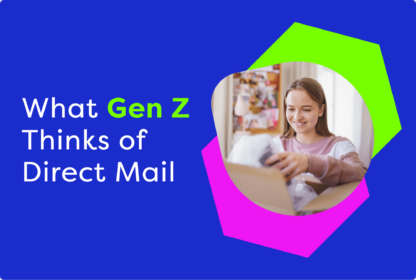We are five weeks out from the next presidential election. And your brand needs to care about this timeline, even if you have nothing to do with politics. All companies must understand the voter as a consumer and the consumer as a voter.
Marketers should treat Election Day similarly to the lead-up to key holiday shopping days by monitoring increases in advertising costs, decreases in marketing performance, and new strategies for optimizing their efforts.
The State of Digital Advertising in an Election Year
This year, political ad spending is estimated to reach $16 billion as campaign teams buy up massive amounts of inventory to reach as many people as possible before Election Day. This will increase costs while decreasing performance for non-political marketing campaigns. For instance, costs for running connected TV and paid social campaigns are predicted to rise by 15% to 50%. At the same time, email open rates will likely drop 2% to 3% per week leading up to the election.
Why? Because political ads across social media, search, emails, SMS, TV, radio, and more will completely inundate Internet users. So, many consumers will stop engaging with many brands for some time—especially given that the election occurs just as holiday shopping gets going, adding more noise to digital channels. And when consumers stop engaging with brands’ ads, they also stop spending—the past two elections have also shown a notable dip in spending, both two weeks before and during the week of the election.
Consumers might also constrain spending for other reasons, starting with the campaign. It’s been contentious, raising anxiety about the economy, legislation, societal woes, and other critical issues. Part of this anxiety will emerge in consumer shopping sentiment and habits. Congressional races in certain key states will also impact consumer sentiment. If people constantly see ads about job loss and a sluggish economy, they may be hesitant to spend. Given the recent sudden drop in consumer confidence, those feelings might be intensified.
The only prescription to cure this dual election-driven digital fatigue and consumer economic worry will be to reach the right shoppers with relevant messages in new ways up to and after November 5th.
Get Consumers to Embrace Your Message
The good news is that sales typically rebound post-election, meaning marketers should set the stage now to begin capturing consumer attention the day after the polls close.
Most brands won’t know their target consumers’ political affiliation. But with the right marketing tools, channels, and data in place, they can understand where they live, down to the household level. Depending on where their target user resides, they can incorporate more nuance on consumer economic sentiment into their messaging and creative.
For instance, given that many shoppers are searching for deals in Q4 because of the holidays anyway, testing out discount-focused offers for those consumers worried about the economic outlook in the run-up to the election won’t hurt. Suppose you can also arm yourself with first-party consumer intent, transaction data, and household addresses. In that case, you can identify and engage those high-value customers willing to spend this Q4. Whatever the message, having this kind of data at your disposal will allow your brand to personalize its messaging better and precisely target audiences during a time when consumers only pay attention to the advertising that resonates with them.
Expand Your Omnichannel Strategy to Include Offline
Message matters—but so does the medium you use to deliver it.
Because of all the digital noise surrounding the election and the holidays, you have little choice but to consider non-digital channels to reach your audiences. Offline channels also help protect brands from wildly fluctuating CPMs.
For example, delivering brand media via programmatic direct mail offers a tangible, less cluttered medium that captures consumers’ attention more effectively. It can be a welcome reprieve from heavy political messages, allowing marketers to connect with audiences and strengthen relationships. Programmatic direct mail rates also do not change due to demand as digital media CPMs do, helping preserve marketing budgets during a critical quarter.
If you combine an offline channel like programmatic direct mail with the power of programmatic advertising, you get the best of both worlds: consumers’ online behaviors and household addresses.
Some tips for leveraging PDM in your non-political marketing campaigns include:
- Note the calendar: While a retargeting effort means mail is getting into the home every day. Still, it’s worth recognizing that campaign teams tend to heavily use direct mail marketing in the two weeks before Election Day, which can slow down delivery times due to a spike in volume. Response rates can drop if your mail piece competes for consumers’ attention.
- Ditch the red, white, and blue: One way to get lost in the mail is to use the same colors as our political parties. Instead, consider a bold, distinctive color scheme and creative imagery to stand out. Make your offer clear and upfront, and avoid too busy formats.
- Consider a retargeting campaign: As a recent blog post mentioned, retargeting is instrumental to holiday campaigns, especially given that the window between Thanksgiving and Christmas is tight this year. Customer retargeting with PDM connects your website activity to your CRM data, making it possible to quickly engage customers with relevant cross-sell, up-sell, or re-sell offers at home.
While the election outcome continues to be anyone’s guess, you shouldn’t use a crystal ball to determine which consumers to target on which channels with which offers this fall. You should get good outcomes if equipped with good first-party data and hybrid media that cuts through the election mayhem, like PebblePost Programmatic Direct Mail.
If you want to turbo-charge the performance of your customer acquisition and retention programs, let’s talk.



